- Trang chủ
- Về chúng tôi
- Ngành
- Dịch vụ
- Đọc
- Liên hệ với chúng tôi
Thị trường khí đốt eo hẹp: Phân tích hiện tại và Dự báo (2024-2032)
Nhấn mạnh vào Theo Loại (Đã qua Chế biến và Chưa qua Chế biến), Theo Ứng dụng (Công nghiệp, Phát điện, Dân dụng, Thương mại và Giao thông vận tải), và Khu vực (Bắc Mỹ (Hoa Kỳ, Canada, Phần còn lại của Bắc Mỹ), Châu Âu (Đức, Vương quốc Anh, Pháp, Ý, Tây Ban Nha, Phần còn lại của Châu Âu), Châu Á - Thái Bình Dương (Trung Quốc, Nhật Bản, Ấn Độ, Phần còn lại của Châu Á - Thái Bình Dương), Phần còn lại của Thế giới)
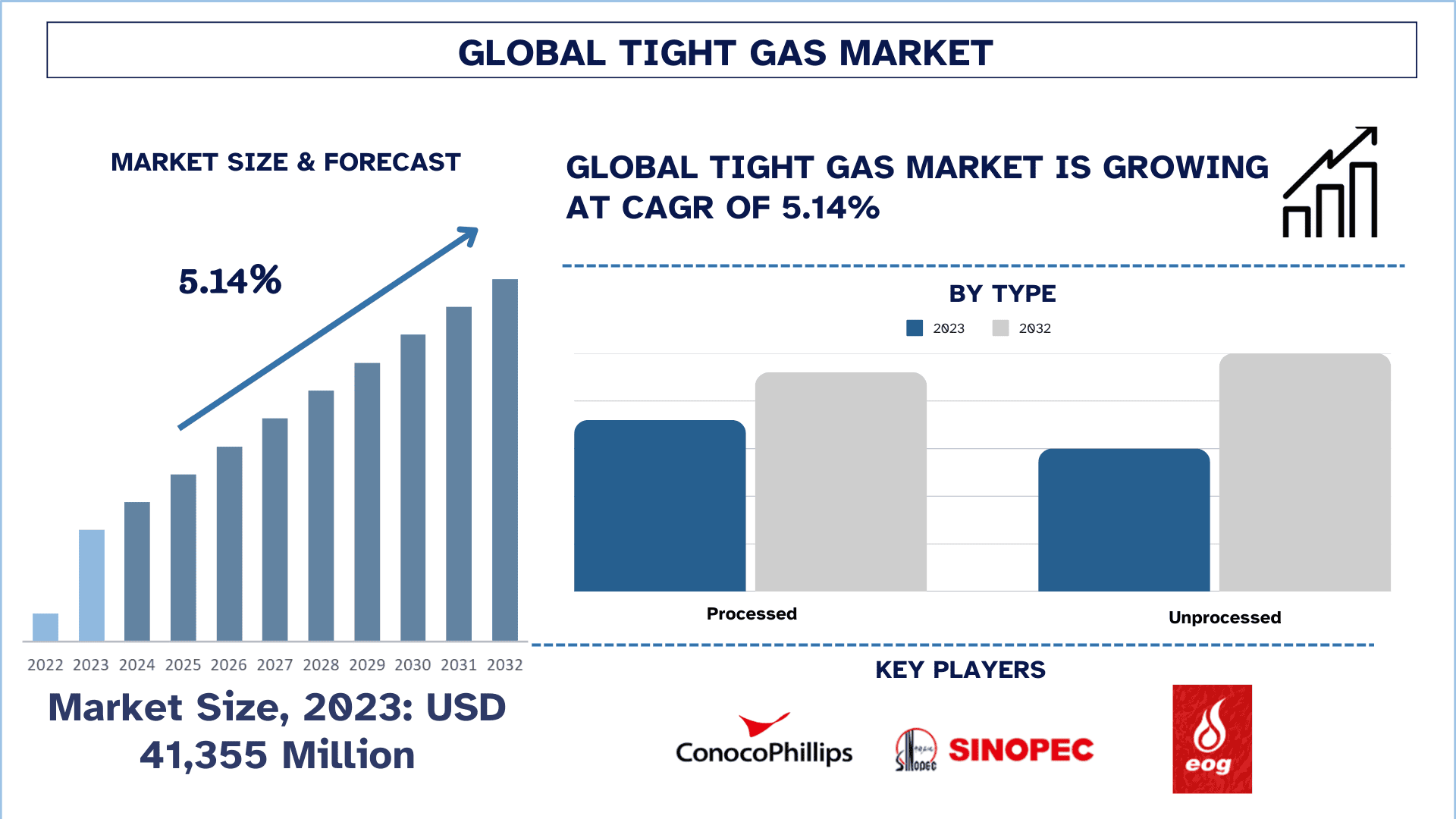
Quy mô & Dự báo Thị trường Khí Gas Chặt toàn cầu
Thị trường Khí Gas Chặt toàn cầu được định giá 41.355 triệu USD vào năm 2023 và dự kiến sẽ tăng trưởng với tốc độ CAGR mạnh mẽ khoảng 5,14% trong giai đoạn dự báo (2024-2032) do nhu cầu về nhiên liệu sạch hơn trên toàn cầu ngày càng tăng.
Phân tích Thị trường Khí Gas Chặt toàn cầu
"Khí gas chặt" ngụ ý rằng khí tự nhiên bị giới hạn trong các dạng đá có độ thấm thấp như đá phiến sét hoặc đá sa thạch, nơi khó khai thác bằng các phương pháp thông thường. Chúng thường được biết đến với cấu trúc chặt chẽ, không thấm nước, cản trở sự di chuyển của khí đối với kênh dẫn lên bề mặt.
Thị trường Khí Gas Chặt toàn cầu được định giá 41.355 triệu USD vào năm 2023 và dự kiến sẽ tăng trưởng với tốc độ CAGR mạnh mẽ khoảng 5,14% trong giai đoạn dự báo (2024-2032). Đã có sự tăng trưởng rất năng động trong thị trường khí gas chặt toàn cầu nhờ những phát triển đã xảy ra trong lĩnh vực kỹ thuật khai thác và nhu cầu toàn cầu ngày càng tăng như đã nêu trên đối với khí tự nhiên. Khí gas chặt thường được lắng đọng trong các bể chứa có độ thấm thấp, những bể này cần các kỹ thuật khoan đặc biệt và phá vỡ thủy lực cho mục đích khai thác. Trong quá trình cải thiện hiệu quả và giảm chi phí, sự đổi mới đã được đưa vào hoạt động khai thác các mỏ khí gas bị suy giảm trước đó. Khí gas chặt rất quan trọng trong bối cảnh năng lượng thế giới, chủ yếu là do khí tự nhiên chiếm ưu thế hơn so với than đá và dầu mỏ vì là một lựa chọn sạch hơn ở nhiều khu vực. Sự tăng vọt trong mức sản xuất từ các nhà máy khí gas chặt, chủ yếu ở Bắc Mỹ và các khu vực quan trọng khác đối với năng lượng, đã giúp chuyển đổi bối cảnh năng lượng trên toàn thế giới bằng cách cung cấp một giải pháp thay thế đáng tin cậy, sạch hơn và hiệu quả hơn.
Sự tăng trưởng của thị trường khí gas chặt có tác động đáng kể đến an ninh năng lượng toàn cầu, tính bền vững và quá trình chuyển đổi năng lượng. Khí gas chặt cung cấp sự đa dạng hóa năng lượng, từ đó giúp giảm sự phụ thuộc vào dầu mỏ và than đá, do đó giúp giảm lượng khí thải carbon. Một hệ quả chính của sự tăng trưởng trong sản xuất và cung cấp khí gas chặt là sự gián đoạn trên thị trường khí tự nhiên thế giới. Nó đã cho phép các thị trường phát triển cũng như một số thị trường mới nổi tiếp cận tài nguyên với giá toàn cầu thấp hơn. Khi các mục tiêu được đặt ra để đạt được các mục tiêu khí hậu quốc tế bởi các chính phủ và các ngành công nghiệp, ngày càng có nhiều nhận thức rằng khí gas chặt là một giải pháp cầu nối trong quá trình chuyển đổi sang năng lượng tái tạo. Nhu cầu về các lựa chọn và công nghệ năng lượng sạch hơn đã mang lại đầu tư vào các công nghệ có thể giảm tác động môi trường của việc khai thác khí gas chặt. Điều này thậm chí còn mở rộng xuống đến việc cải thiện các kỹ thuật phá vỡ hiệu quả hơn và hơn thế nữa, xác định những tiến bộ dẫn đến sử dụng nước hoặc diện tích đất tối thiểu. Xem xét tất cả những thay đổi, nhu cầu về Khí Gas Chặt trong giai đoạn 2024-2032.
Động lực Thị trường Khí Gas Chặt Toàn cầu
Phần này thảo luận về các động lực thị trường chính đang ảnh hưởng đến các phân khúc khác nhau của Thị trường Khí Gas Chặt Toàn cầu như được xác định bởi nhóm chuyên gia nghiên cứu của chúng tôi.
Nhu cầu Năng lượng Ngày càng Tăng
Thị trường khí gas chặt trên toàn thế giới đang có được động lực, được thúc đẩy bởi nhu cầu năng lượng ngày càng tăng của thế giới. Dân số ngày càng tăng, cùng với sự tiến bộ công nghiệp tiếp tục, làm cho việc tìm kiếm năng lượng đáng tin cậy, giá cả phải chăng và đa dạng trở thành một vấn đề. Khí gas chặt, một loại khí tự nhiên bị mắc kẹt trong các thành hệ đá có độ thấm thấp, do đó trở thành một cân nhắc ngày càng quan trọng đối với các yêu cầu năng lượng trong tương lai vì nó cung cấp một giải pháp dễ dàng cho các vấn đề như đã xác định.
Tuy nhiên, khác với khí tự nhiên thông thường, khí gas chặt là loại bị khóa trong các loại đá có độ thấm thấp cần phá vỡ thủy lực và khoan ngang để được mở khóa thông qua các phương pháp tiên tiến. Công nghệ như vậy đã tăng đáng kể hiệu quả và làm tăng vọt độ sạch và khả năng cung cấp khí gas chặt.
Kịch bản trên mô tả việc áp dụng nhiều hơn các phương pháp mới trong công nghệ thăm dò, cả ở Mỹ và Trung Quốc, và bây giờ ở một số vùng của Châu Phi. Sự xuất hiện của những thay đổi thời gian này cũng có nghĩa là ngày càng có nhiều nguồn được tiếp cận. Ngày càng có nhiều người xem khí gas chặt là một chất thay thế xanh hơn cho than đá và dầu mỏ, khi thế giới chuyển sang năng lượng sạch hơn, với mục tiêu giảm lượng khí thải carbon. Điều này khá phù hợp với những nơi đang cố gắng đánh dấu các mục tiêu khí hậu so với việc đảm bảo năng lượng. Hiện tại, việc tiếp thu các công nghệ đã mở rộng khả năng tiếp cận các trữ lượng, vốn trước đây chưa được khai thác, do đó thúc đẩy quy mô thị trường.
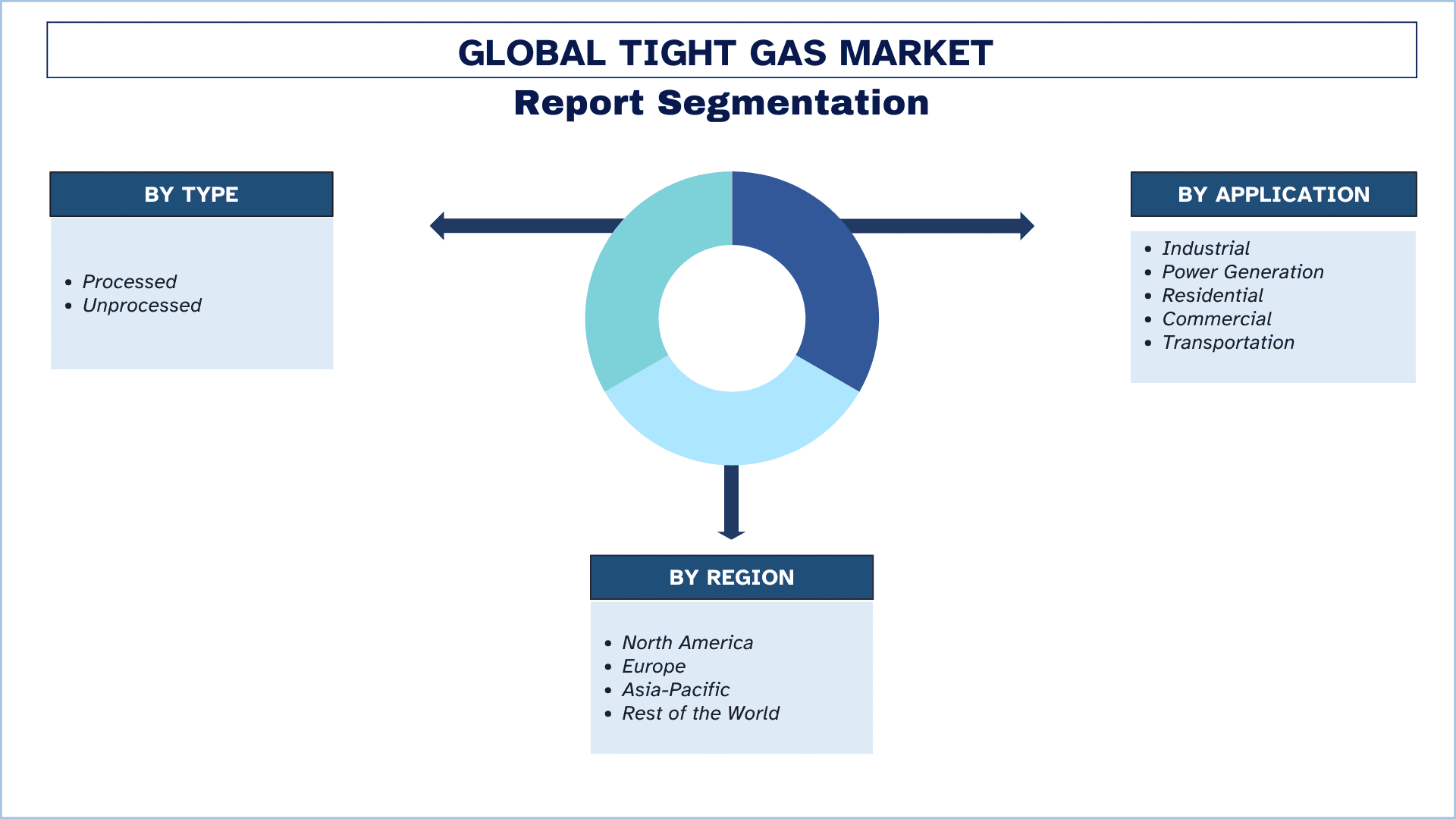
Bắc Mỹ dự kiến sẽ nắm giữ phần lớn thị phần trong giai đoạn dự báo
Tổng quan:
Đã có một sự thúc đẩy đáng kể trong thị trường khí gas chặt ở Bắc Mỹ, với các công nghệ khoan ngang và phá vỡ thủy lực được cải thiện - các quốc gia như Hoa Kỳ và Canada đã nổi lên như những gã khổng lồ trong sản xuất khí gas chặt, vì họ có trữ lượng chưa được khai thác khổng lồ ở các khu vực hình thành đá phiến sét như Marcellus, Haynesville và Permian Basins. Quan trọng hơn nữa là thực tế là sự tăng trưởng của thị trường này đã thúc đẩy một sự chuyển đổi triệt để về bối cảnh năng lượng theo hướng cung cấp trong nước, không nhập khẩu, góp phần vào an ninh năng lượng trong khu vực này.
Các điều kiện để phát triển khí gas chặt ở Bắc Mỹ được hưởng lợi từ cả quy định, các chính sách hỗ trợ của chính phủ và các khoản đầu tư đáng kể - trên thực tế, do đó, đã làm tăng khả năng tồn tại về mặt kinh tế và hiệu quả của việc khai thác tài nguyên khí gas chặt để xây dựng nguồn cung trong nước nhiều hơn trong khi giảm chi phí. Bên cạnh đó, nhu cầu ngày càng tăng đối với các giải pháp năng lượng sạch hơn đã được xác định thông qua việc cung cấp khí gas chặt cho một khu vực chuyển đổi từ than đá sang các nguồn năng lượng tái tạo. Khí gas chặt, vì nó có lượng khí thải carbon tương đối thấp hơn, là điều cần thiết để giảm lượng khí thải carbon trong việc đáp ứng các mục tiêu chặt chẽ cho Bắc Mỹ và giảm lượng carbon, so với than đá và dầu mỏ.
Về mặt tương lai, thị trường khí gas chặt ở Bắc Mỹ sẽ tiếp tục tăng trưởng, được thúc đẩy bởi sản lượng ngày càng tăng và công nghệ tiên tiến để làm cho quá trình phát triển tổng thể bền vững và hiệu quả hơn. Xem xét tất cả những thay đổi, nhu cầu về Khí Gas Chặt sẽ tiếp tục tăng trưởng trong giai đoạn 2024-2032.
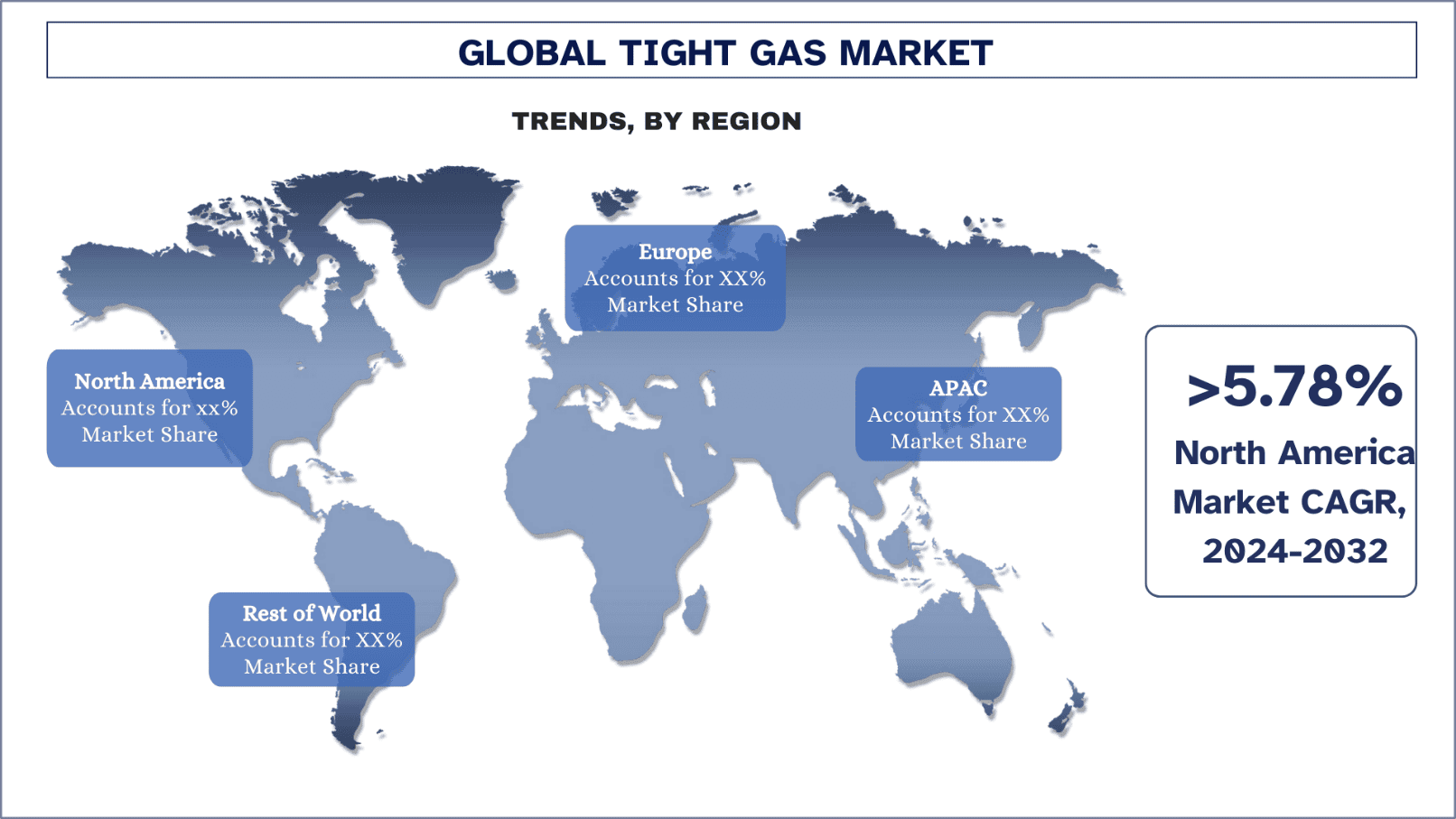
Tổng quan về Ngành Khí Gas Chặt Toàn cầu
Thị trường Khí Gas Chặt Toàn cầu có tính cạnh tranh và phân mảnh, với sự hiện diện của một số người chơi thị trường toàn cầu và quốc tế. Những người chơi chính đang áp dụng các chiến lược tăng trưởng khác nhau để tăng cường sự hiện diện trên thị trường của họ, chẳng hạn như hợp tác, thỏa thuận, cộng tác, ra mắt sản phẩm mới, mở rộng địa lý và sáp nhập và mua lại. Một số người chơi lớn hoạt động trên thị trường là Chevron Corporation, ConocoPhillips, Royal Dutch Shell Plc, Sinopec, Occidental Petroleum Corporation, Aramco, EOG Resources, British Petroleum, Exxon Mobil Corporation, PetroChina.
Tin tức Thị trường Khí Gas Chặt Toàn cầu
Năm 2023, Aramco, một trong những công ty dầu khí hàng đầu thế giới, thông báo đã sản xuất thành công khí gas chặt phi truyền thống từ khu vực hoạt động South Ghawar trước thời hạn hai tháng. Aramco đã lên kế hoạch sản xuất hơn một nửa, trên mức năm 2021 vào năm 2030, với nhu cầu ngày càng tăng trên toàn cầu.
Phạm vi Báo cáo Thị trường Khí Gas Chặt Toàn cầu
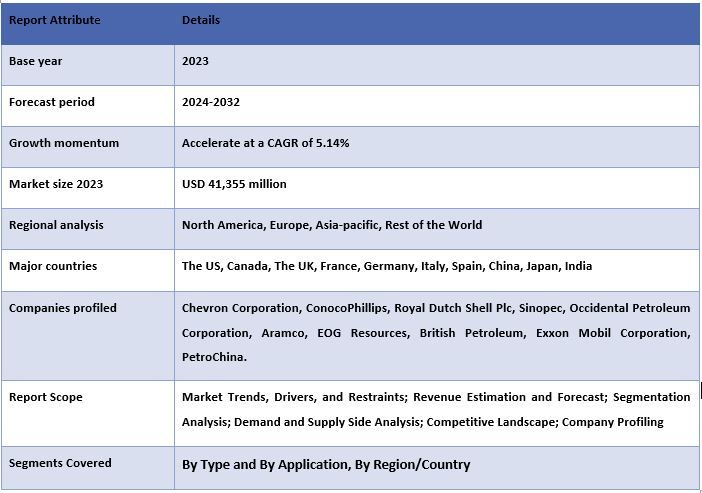
Lý do nên mua báo cáo này:
Nghiên cứu bao gồm phân tích dự báo và định cỡ thị trường được xác thực bởi các chuyên gia hàng đầu trong ngành đã được xác thực.
Báo cáo trình bày đánh giá nhanh về hiệu suất tổng thể của ngành trong nháy mắt.
Báo cáo bao gồm phân tích chuyên sâu về các đồng nghiệp nổi bật trong ngành với trọng tâm chính vào tài chính kinh doanh chính, danh mục sản phẩm, chiến lược mở rộng và các phát triển gần đây.
Kiểm tra chi tiết các động lực, hạn chế, xu hướng chính và cơ hội hiện hành trong ngành.
Nghiên cứu bao trùm toàn diện thị trường trên các phân khúc khác nhau.
Phân tích sâu cấp khu vực của ngành.
Tùy chọn Tùy chỉnh:
Thị trường Khí Gas Chặt Toàn cầu có thể được tùy chỉnh thêm theo yêu cầu hoặc bất kỳ phân khúc thị trường nào khác. Bên cạnh đó, UMI hiểu rằng bạn có thể có nhu cầu kinh doanh riêng của mình; do đó, vui lòng kết nối với chúng tôi để nhận được một báo cáo hoàn toàn phù hợp với yêu cầu của bạn.
Mục lục
Phương Pháp Nghiên Cứu Phân Tích Thị Trường Khí Đá Phiến Toàn Cầu (2024-2032)
Phân tích thị trường lịch sử, ước tính thị trường hiện tại và dự báo thị trường tương lai của thị trường Khí Đá Phiến Toàn Cầu là ba bước chính được thực hiện để tạo và phân tích việc áp dụng Khí Đá Phiến ở các khu vực chính trên toàn cầu. Nghiên cứu thứ cấp toàn diện đã được tiến hành để thu thập số liệu thị trường lịch sử và ước tính quy mô thị trường hiện tại. Thứ hai, để xác thực những hiểu biết này, nhiều phát hiện và giả định đã được đưa vào xem xét. Hơn nữa, các cuộc phỏng vấn sơ cấp toàn diện cũng được thực hiện với các chuyên gia trong ngành trên toàn bộ chuỗi giá trị của thị trường Khí Đá Phiến Toàn Cầu. Sau khi giả định và xác thực số liệu thị trường thông qua các cuộc phỏng vấn sơ cấp, chúng tôi đã sử dụng phương pháp tiếp cận từ trên xuống/từ dưới lên để dự báo quy mô thị trường hoàn chỉnh. Sau đó, các phương pháp phân tích thị trường và phương pháp phân tích dữ liệu tam giác đã được áp dụng để ước tính và phân tích quy mô thị trường của các phân khúc và phân đoạn con của ngành. Phương pháp chi tiết được giải thích dưới đây:
Phân tích Quy mô Thị trường Lịch sử
Bước 1: Nghiên cứu Chuyên sâu về các Nguồn Thứ cấp:
Một nghiên cứu thứ cấp chi tiết đã được thực hiện để thu thập quy mô thị trường lịch sử của thị trường Khí Đá Phiến Toàn Cầu thông qua các nguồn nội bộ của công ty như báo cáo thường niên & báo cáo tài chính, thuyết trình hiệu suất, thông cáo báo chí, v.v., và các nguồn bên ngoài bao gồm tạp chí, tin tức & bài viết, ấn phẩm của chính phủ, ấn phẩm của đối thủ cạnh tranh, báo cáo ngành, cơ sở dữ liệu của bên thứ ba và các ấn phẩm đáng tin cậy khác.
Bước 2: Phân khúc Thị trường:
Sau khi thu thập được quy mô thị trường lịch sử của thị trường Khí Đá Phiến Toàn Cầu, chúng tôi đã tiến hành phân tích thứ cấp chi tiết để thu thập thông tin chi tiết về thị trường lịch sử và chia sẻ cho các phân khúc & phân đoạn con khác nhau cho các khu vực chính. Các phân khúc chính được bao gồm trong báo cáo là Theo Loại và Theo Ứng dụng. Phân tích sâu hơn ở cấp độ khu vực/quốc gia đã được tiến hành để đánh giá việc áp dụng tổng thể các mô hình thử nghiệm ở khu vực đó.
Bước 3: Phân tích Yếu tố:
Sau khi có được quy mô thị trường lịch sử của các phân khúc và phân đoạn con khác nhau, chúng tôi đã tiến hành phân tích yếu tố chi tiết để ước tính quy mô thị trường hiện tại của thị trường Khí Đá Phiến Toàn Cầu. Hơn nữa, chúng tôi đã tiến hành phân tích yếu tố bằng cách sử dụng các biến phụ thuộc và độc lập như Theo Loại và Theo Ứng dụng trong thị trường Khí Đá Phiến Toàn Cầu. Một phân tích kỹ lưỡng đã được thực hiện cho các kịch bản cung và cầu xem xét các quan hệ đối tác hàng đầu, sáp nhập và mua lại, mở rộng kinh doanh và ra mắt sản phẩm trong lĩnh vực thị trường Khí Đá Phiến Toàn Cầu trên toàn cầu.
Ước tính & Dự báo Quy mô Thị trường Hiện tại
Định cỡ Thị trường Hiện tại: Dựa trên những hiểu biết sâu sắc có thể hành động từ 3 bước trên, chúng tôi đã đưa ra quy mô thị trường hiện tại, những người chơi chính trong thị trường Khí Đá Phiến Toàn Cầu và thị phần của các phân khúc. Tất cả các tỷ lệ phần trăm chia sẻ và phân tích thị trường cần thiết đã được xác định bằng cách sử dụng phương pháp thứ cấp đã đề cập ở trên và được xác minh thông qua các cuộc phỏng vấn sơ cấp.
Ước tính & Dự báo: Để ước tính và dự báo thị trường, trọng số đã được gán cho các yếu tố khác nhau, bao gồm động lực & xu hướng, hạn chế và cơ hội có sẵn cho các bên liên quan. Sau khi phân tích các yếu tố này, các kỹ thuật dự báo liên quan, tức là phương pháp tiếp cận từ trên xuống/từ dưới lên, đã được áp dụng để đưa ra dự báo thị trường cho năm 2032 cho các phân khúc và phân đoạn con khác nhau trên các thị trường lớn trên toàn cầu. Phương pháp nghiên cứu được áp dụng để ước tính quy mô thị trường bao gồm:
Quy mô thị trường của ngành, về doanh thu (USD) và tỷ lệ chấp nhận của thị trường Khí Đá Phiến Toàn Cầu trên các thị trường lớn trong nước
Tất cả các tỷ lệ phần trăm chia sẻ, phân tích và phân tách của các phân khúc và phân đoạn con thị trường
Những người chơi chính trong thị trường Khí Đá Phiến Toàn Cầu về các sản phẩm được cung cấp. Ngoài ra, các chiến lược tăng trưởng được những người chơi này áp dụng để cạnh tranh trong thị trường đang phát triển nhanh chóng.
Xác thực Quy mô và Thị phần Thị trường
Nghiên cứu Sơ cấp: Các cuộc phỏng vấn chuyên sâu đã được thực hiện với các Nhà Lãnh Đạo Quan Điểm Chủ Chốt (KOL), bao gồm các Giám đốc Điều hành Cấp Cao (CXO/VP, Trưởng phòng Kinh doanh, Trưởng phòng Marketing, Trưởng phòng Điều hành, Trưởng phòng Khu vực, Trưởng phòng Quốc gia, v.v.) trên khắp các khu vực chính. Các phát hiện sơ cấp sau đó được tóm tắt và phân tích thống kê đã được thực hiện để chứng minh giả thuyết đã nêu. Thông tin đầu vào từ nghiên cứu sơ cấp đã được hợp nhất với các phát hiện thứ cấp, do đó biến thông tin thành những hiểu biết sâu sắc có thể hành động.
Phân chia Người Tham gia Sơ cấp ở các Khu vực Khác nhau
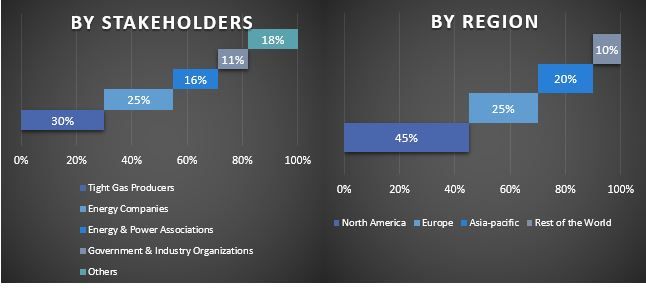
Kỹ thuật Thị trường
Kỹ thuật phân tích dữ liệu tam giác đã được sử dụng để hoàn thành việc ước tính thị trường tổng thể và để đưa ra các số liệu thống kê chính xác cho từng phân khúc và phân đoạn con của thị trường Khí Đá Phiến Toàn Cầu. Dữ liệu được chia thành nhiều phân khúc và phân đoạn con sau khi nghiên cứu các thông số và xu hướng khác nhau Theo Loại và Theo Ứng dụng trong thị trường Khí Đá Phiến Toàn Cầu.
Mục tiêu chính của Nghiên cứu Thị trường Khí Đá Phiến Toàn Cầu
Các xu hướng thị trường hiện tại & tương lai của thị trường Khí Đá Phiến Toàn Cầu đã được xác định trong nghiên cứu. Các nhà đầu tư có thể thu được những hiểu biết sâu sắc chiến lược để dựa vào sự thận trọng của họ cho các khoản đầu tư dựa trên phân tích định tính và định lượng được thực hiện trong nghiên cứu. Các xu hướng thị trường hiện tại và tương lai đã xác định mức độ hấp dẫn tổng thể của thị trường ở cấp độ khu vực, cung cấp một nền tảng cho người tham gia công nghiệp khai thác thị trường chưa được khai thác để hưởng lợi từ lợi thế của người đi đầu. Các mục tiêu định lượng khác của các nghiên cứu bao gồm:
Phân tích quy mô thị trường hiện tại và dự báo của thị trường Khí Đá Phiến Toàn Cầu về giá trị (USD). Ngoài ra, phân tích quy mô thị trường hiện tại và dự báo của các phân khúc và phân đoạn con khác nhau.
Các phân khúc trong nghiên cứu bao gồm các lĩnh vực Theo Loại và Theo Ứng dụng.
Xác định và phân tích khuôn khổ pháp lý cho ngành công nghiệp Khí Đá Phiến toàn cầu.
Phân tích chuỗi giá trị liên quan đến sự hiện diện của các trung gian khác nhau, cùng với việc phân tích hành vi của khách hàng và đối thủ cạnh tranh trong ngành.
Phân tích quy mô thị trường hiện tại và dự báo của thị trường Khí Đá Phiến Toàn Cầu cho các khu vực chính.
Các quốc gia chính của các khu vực được nghiên cứu trong báo cáo bao gồm Bắc Mỹ (Mỹ, Canada và phần còn lại của Bắc Mỹ), Châu Âu (Anh, Pháp, Đức, Ý, Tây Ban Nha, phần còn lại của Châu Âu), Châu Á-Thái Bình Dương (Trung Quốc, Nhật Bản, Ấn Độ, phần còn lại của Châu Á-Thái Bình Dương), phần còn lại của Thế giới
Hồ sơ công ty của thị trường Khí Đá Phiến Toàn Cầu và các chiến lược tăng trưởng được những người chơi thị trường áp dụng để duy trì trong thị trường đang phát triển nhanh chóng.
Phân tích sâu ở cấp độ khu vực của ngành.
Câu hỏi thường gặp Câu hỏi thường gặp
Câu hỏi 1: Quy mô thị trường hiện tại và tiềm năng tăng trưởng của thị trường Khí chặt toàn cầu là gì?
Thị trường Khí đốt Khí chặt toàn cầu được định giá 41.355 triệu USD vào năm 2023 và dự kiến sẽ tăng trưởng với tốc độ CAGR là 5,14% trong giai đoạn dự báo (2024-2032).
Q2: Động lực thúc đẩy sự tăng trưởng của thị trường Khí Đốt Chặt toàn cầu là gì?
Nhu cầu toàn cầu ngày càng tăng đối với khí đốt tự nhiên là một trong những yếu tố chính thúc đẩy tăng trưởng.
Q3: Phân khúc nào chiếm thị phần lớn nhất trong thị trường Khí đốt chặt toàn cầu theo Loại?
Phân khúc đã qua xử lý chiếm thị phần lớn nhất của thị trường Khí Đốt Chặt toàn cầu theo Loại.
Q4: Khu vực nào sẽ thống trị thị trường Khí đốt chặt toàn cầu?
Bắc Mỹ dự kiến sẽ chiếm ưu thế trên thị trường trong giai đoạn dự báo.
Liên quan Báo cáo
Khách hàng đã mua mặt hàng này cũng đã mua










